1. The Giant Bulletin Board of Nothing
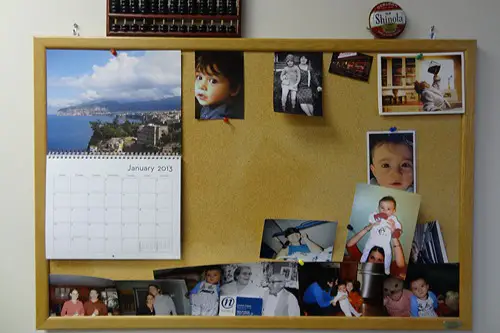
From Boy Meets World to The Big Bang Theory, some homes feature huge corkboards or whiteboards that appear to hold… nothing of value. You’ll see a few coupons, maybe a photo, but mostly blank space or outdated reminders. In real life, bulletin boards are clutter magnets full of doctor’s appointments and expired takeout menus. Sitcoms prefer them neat and visually pleasing.
They function more as a backdrop than a real tool. Sometimes a character might post a passive-aggressive note or reminder, but it rarely comes up again. It’s just another way to say “this family communicates” without actual evidence. You’d be hard-pressed to find a real household where the board isn’t covered in chaos.
2. The Perpetually Full Fruit Bowl
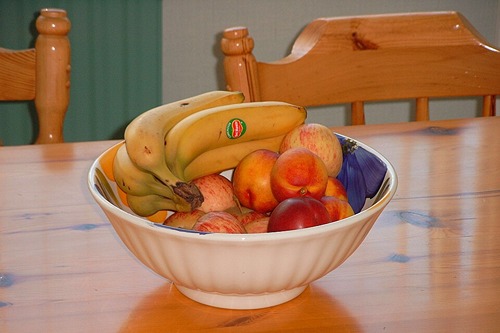
From Full House to Modern Family, there’s always a giant bowl of shiny, untouched fruit on the kitchen counter. It’s usually filled with pristine apples, oranges, and bananas that never seem to rot. While it’s meant to signify a wholesome, lived-in home, most households can’t keep that fruit around without someone grabbing a snack. And yet, there it sits, looking freshly arranged every episode.
The fruit bowl serves more as a set decoration than a real food source. Props departments even use wax or plastic versions for longevity and consistency. It’s not about health or convenience—it’s visual shorthand for “this family has it together.” But anyone who’s ever forgotten about a banana for a week knows how unrealistic that perfect display really is.
3. The Comically Oversized Coffee Table
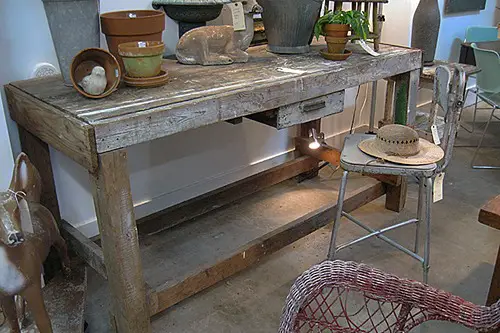
Take a look at the coffee tables in shows like How I Met Your Mother or New Girl, and you’ll notice they’re huge. Often, they dominate the entire living room, with just enough space to walk around them. These tables are clearly chosen to give actors room to set props down and perform visual gags. But in a typical apartment, you’d trip over something that size daily.
The coffee table becomes a mini-stage for pizza boxes, board games, or dramatic declarations. It’s a storytelling hub more than a functional piece of furniture. For most viewers living in smaller spaces, it’s totally aspirational (and mildly absurd). Who knew a simple table could take up that much real estate—and still not have coasters?
4. The Kitchen Island with No Actual Storage
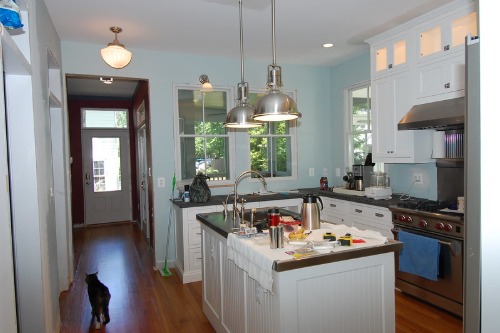
In sitcom kitchens like the one in Everybody Loves Raymond, there’s often a massive island with stools—yet it’s rarely used for cooking. Instead, it’s the place where characters perch to chat, deliver punchlines, or drink coffee in the middle of the day. In real life, kitchen islands are prized for storage and prep space. But sitcom ones seem suspiciously spotless and empty.
That’s because they’re more stage than kitchen. Drawers and cabinets are usually fake or barely functional, and there’s never any visible clutter. The island becomes a kind of casual gathering spot that conveniently lets actors face the audience. But if you’ve ever tried to cook dinner while people are lounging right where you need to chop onions, you know this setup wouldn’t fly.
5. The Magical Second Fridge
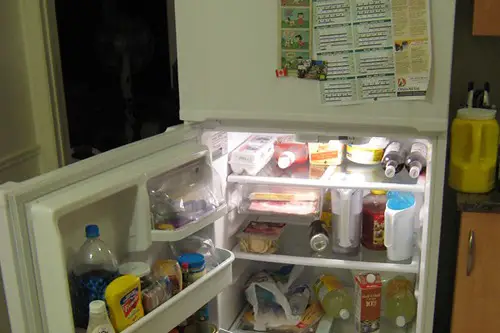
In shows like The King of Queens and Roseanne, there’s often a mysterious second fridge—sometimes in the garage or basement. It’s rarely explained, but it’s somehow always stocked and accessible. In real life, a second fridge usually screams “party house” or “we buy in bulk,” not “this is totally normal.” Sitcoms use it to give characters an excuse to wander offstage or return with snacks.
It becomes a subtle tool to stretch the geography of the home. Plus, it conveniently allows for more food-based storylines without cluttering the main kitchen. For many American families, it’s a luxury; in sitcoms, it’s just assumed. You’ll rarely see anyone clean it, but somehow it’s always working.
6. The Always-Open Front Door
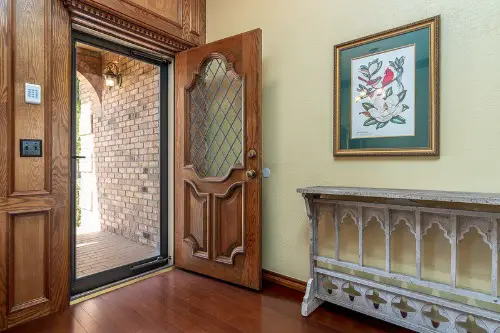
Sitcoms love an open-door policy—literally. In Seinfeld, Friends, and Everybody Loves Raymond, people walk into each other’s homes unannounced all the time. The front door is either never locked or left ajar for comedic timing. In reality, this would lead to awkward encounters, security issues, or at least a neighborly complaint.
It’s all about pacing—writers use these surprise entrances for jokes or exposition. An open door makes it easy to stage unexpected reunions or chaotic drop-ins. But in most households, even close friends knock. In sitcom land, privacy just isn’t part of the script.
7. The Couch Facing Away from the TV
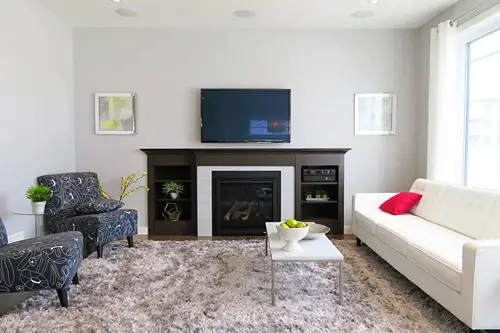
In shows like Friends and Frasier, the main couch is usually turned away from the television, which feels like a setup only designed for punchlines, not actual viewing. It’s all about staging—creators need to show the actors’ faces while they interact. But realistically, how many people sit with their backs to the TV in real life? It makes for great audience engagement, but questionable interior design.
This setup is most obvious in Monica’s apartment in Friends, where the TV is shoved in the corner like an afterthought. Joey literally buys a whole entertainment center at one point, and yet no one reorients the furniture. The point is to emphasize relationships over screen time, which is sweet, but impractical. It’s a perfect example of sitcom logic trumping real-life habits.
8. The Formal Dining Room That’s Never Used
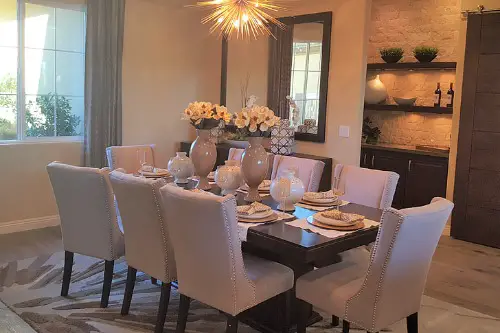
Plenty of sitcom homes have elegant dining rooms that seem to exist solely for Thanksgiving episodes. Take Home Improvement or Full House—there’s often a room with a big table, fancy chairs, and a centerpiece. But on a daily basis, the family eats at the kitchen table or in front of the TV. The formal dining room just collects dust and backstory.
These rooms are mostly set dressing, offering a nod to traditional middle-class American ideals. Occasionally, they’re used for dramatic family meetings or special guests. But in most modern homes, that space has been converted into an office or playroom. In sitcoms, it’s a time capsule of a more formal era.
9. The Overly Themed Kid’s Bedroom
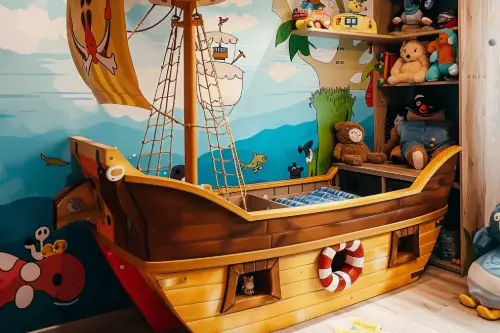
In Fuller House and Malcolm in the Middle, kids’ rooms are decked out with one overwhelming theme—space, dinosaurs, princesses, you name it. Every pillow, wall decal, and bedspread is on-theme, like a department store display. Realistically, most kids’ rooms are a mix of whatever’s clean and what hasn’t been outgrown. But sitcoms go all-in on visual cues.
It’s a shortcut to define the character’s personality instantly. The astronaut bedsheets? That kid’s a dreamer. The neon skateboard wallpaper? Total troublemaker. It’s more about branding than believability.
10. The Always-Set Dining Table
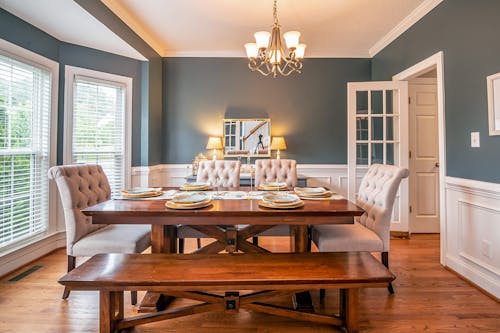
In shows like The Cosby Show or Fresh Prince of Bel-Air, the dining table is eternally ready for a meal. Placemats, napkin rings, and full place settings—even if no one ever eats there. It’s meant to convey order and stability, but it doesn’t reflect the daily clutter of bills, backpacks, or half-finished puzzles. Most people don’t set a table unless guests are coming over.
This design choice is part of the visual rhythm of a sitcom home. A clean, inviting table is a cue that the family is doing okay—regardless of what’s happening in the script. It also allows for seamless transition into dinner scenes without rearranging props. But if your table is always guest-ready, you’re either on TV or trying way too hard.
11. The Never-Used Backyard Grill
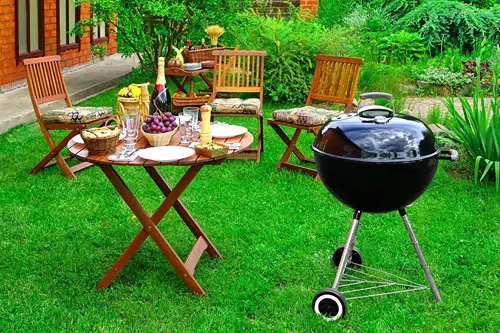
Sitcoms love showing off a patio grill, especially in suburban settings like King of the Hill or The Middle. It’s almost always sparkling clean and ready to fire up, but you rarely see anyone cooking on it. Instead, it’s used as a backdrop for man-to-man chats or awkward neighborhood encounters. In real life, grills get grimy, spider-infested, and rarely stay that shiny.
The grill is a symbol of classic American leisure, even if it never actually gets used. It’s aspirational—a prop to signal a kind of upper-middle-class comfort. If the characters do use it, it’s usually for a one-off BBQ episode. Otherwise, it just looms in the background like a forgotten promise of summer.
12. The Living Room Chair No One Sits In
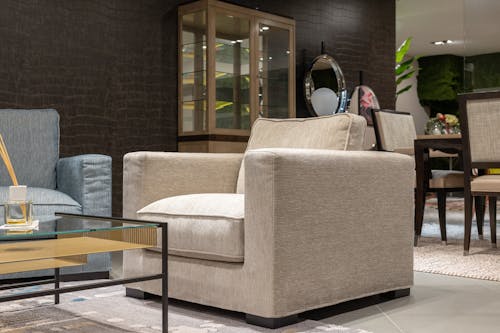
You’ll often see a plush armchair in sitcom living rooms that seems to exist purely for symmetry. In Everybody Loves Raymond, the recliner is Ray’s designated throne, but in many other shows, the chair goes entirely unused. It looks comfy, but characters almost never choose it when they enter the room. It’s essentially a set piece pretending to be furniture.
This chair’s real job is visual balance—to keep the living room looking full and staged. It also gives characters an extra option for blocking, in case they need to sit apart. But in most homes, a rarely used chair gets demoted or removed. On sitcoms, it stays pristine and perfectly angled forever.
13. The Hidden Laundry Machines
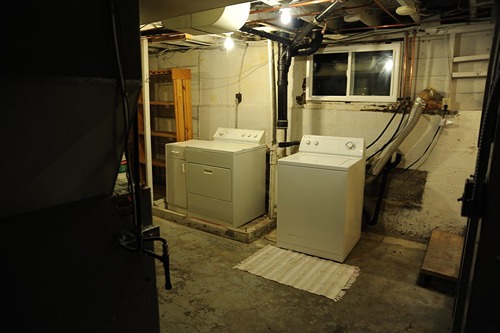
In many sitcoms, laundry is either a mystical off-screen activity or takes place in the basement dungeon (That ’70s Show, Everybody Loves Raymond). Even when the washer and dryer exist, they’re often behind folding doors or conveniently ignored. Real families tend to do a lot more laundry than sitcom characters ever admit. But somehow, no one is ever folding towels during a dramatic monologue.
This is partly because laundry is loud and visually boring—two things writers try to avoid. When it does show up, it’s usually for a sight gag (like socks stuck to a character’s shirt). Otherwise, it’s treated like a background process that never interrupts anything. In reality, laundry baskets would be taking over the set.
14. The Fireplace That’s Never Lit
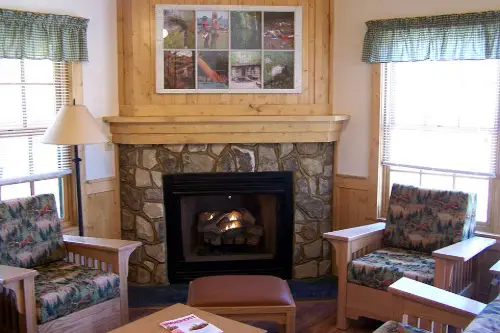
Tons of sitcom homes have a beautiful brick or stone fireplace—Full House, The Brady Bunch, and New Girl all come to mind. But how often do you actually see flames in there? Almost never. It’s purely decorative, and lighting it would mess with the lighting, sound, and safety of the set.
The fireplace is meant to convey warmth, even when it’s literally just an empty nook. Sometimes it holds candles or fairy lights for ambiance, but actual fire is rare. It’s more about what it represents than what it does. And if your fireplace has more dust than ash, you might just be living in a sitcom too.
This post 14 Objects Found in Homes That Only Make Sense in American Sitcoms was first published on Greenhouse Black.
